- You are here:
- Home »
- Author's archive:
All posts by Bike Master

Benefits of Using Clipless Pedals
For every type of bicycle usage such as a mountain bike or a road bike, there is an optimal pedal system. Pedal systems are divided into three umbrella categories, which are: Flat pedals, clip-on pedals, and clipless pedals. Clipless pedals have become increasingly popular in the last ten years, due to a concerted research and development effort on the part of manufacturers, to innovate and improve how bikers ride.
As bikers, we get to take advantage of the new and improved hardware, created by a competitive market demand, and, for those, looking for a concise and consistent way to better their ride, the benefits of using clipless pedals are easily seen.
The Clipless Bicycle Pedal
A clipless bike pedal does, in fact, use a “clip.” If the pedal was called, an “easy-release pedal,” it might make more sense. “Clipless” refers to the design of a clip-on bike pedal, which predates that of the clipless system.
Clipless System Impetus
Before the clipless system for shoes was conceived, the clip-on pedal system was the standard amongst avid bikers and professionals and is still in use today. This pedal system had several downfalls, as did some preliminary innovations on it, which eventually led to the advent of the modern clipless pedal design.
The clip-on system utilizes a “cage” that is attached to the bike pedal and surrounds a rider’s toe or forefoot, either with a tight hard shell or with an adjustable strap. One downfall of this system was seen in off-roading when a rider’s foot rattled and bounced inside the toe cage, reducing effort efficiency.
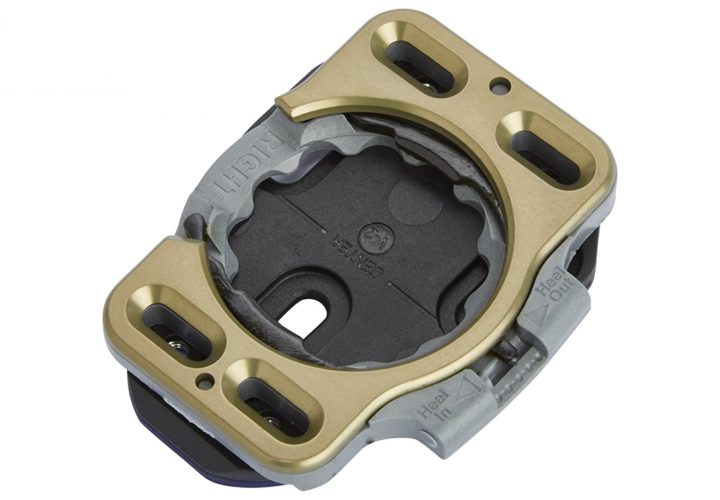 However, the biggest detriment was seen in an accident, when a rider could not remove their feet and shoes from the pedal strap and, as a result, suffered greater injuries. The early predecessor to the modern clipless pedal was first invented as a lever system. A rider had to physically release a pedal lever by hand, which, in a crash, was nearly impossible to accomplish and earned it a deathly reputation among bikers.
However, the biggest detriment was seen in an accident, when a rider could not remove their feet and shoes from the pedal strap and, as a result, suffered greater injuries. The early predecessor to the modern clipless pedal was first invented as a lever system. A rider had to physically release a pedal lever by hand, which, in a crash, was nearly impossible to accomplish and earned it a deathly reputation among bikers.
Riders needed a way of connecting their feet firmly to the pedals thus enabling their hamstrings to pull upwards through the pedal stroke as well as a safety feature, allowing a rider to disconnect their feet from the pedal, in an instant. Though it was first conceived in 1895, the clipless pedal did not gain widespread recognition and acceptance until 1985, when Bernard Hinault became the first biker to ever win the Tour de France using a clipless pedal system.
Using a Clipless Bike Pedal
A clipless bike pedal works by implementing a cleat on the ball of the bike shoe’s sole, which locks into a clip located on the bike’s pedals. The clips are adjustable for firmness, but allow the biker’s feet to maneuver freely. To unlock the shoe’s cleat from the pedals bracket clip, a biker only has to swing their heel away from the bike and the spring operated clip unlocks instantaneously.
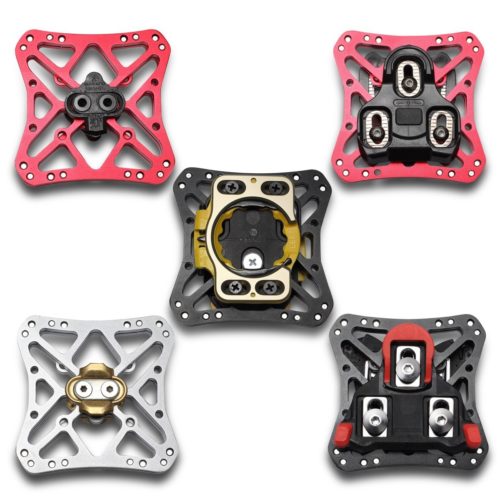 These are called “clipless” since the releasing mechanism is hands-free. However, if it makes you feel better to call them “locking pedals” or “lock and release pedals” feel free. The point is, clipless pedals connect a rider’s feet securely to the bike’s drive train and unlock them from the pedal on command—in an instant. This is why they are the modern standard for bikers everywhere. Once you switch over to clipless pedals, there is no substitution.
These are called “clipless” since the releasing mechanism is hands-free. However, if it makes you feel better to call them “locking pedals” or “lock and release pedals” feel free. The point is, clipless pedals connect a rider’s feet securely to the bike’s drive train and unlock them from the pedal on command—in an instant. This is why they are the modern standard for bikers everywhere. Once you switch over to clipless pedals, there is no substitution.
Benefits of Using Clipless Pedals
Just about every single aspect of your ride will be benefited by using clipless pedals. They are perfect for riders who use their bike as a means of heavy transportation, recreation, or any other type of consistent use. All clipless pedals require a specialized shoe and a compatible cleat, which features a hard sole design, eliminating pressure from the cleat on the ball of the rider’s foot.
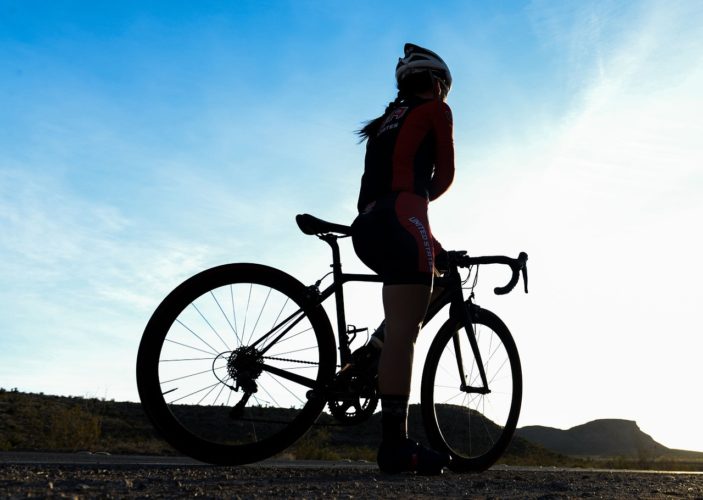 In less than a day, most first-timers have the locking-in and out action in their muscle memory and can do it smoothly, without having to look down. Specifically, the benefits of using clipless pedals are seen in a biker’s improved safety, more efficient effort expenditure, and greater handling power to provide overall greater comfort when for bikers when riding.
In less than a day, most first-timers have the locking-in and out action in their muscle memory and can do it smoothly, without having to look down. Specifically, the benefits of using clipless pedals are seen in a biker’s improved safety, more efficient effort expenditure, and greater handling power to provide overall greater comfort when for bikers when riding.
Safety & Control
If you have ever been out biking in a rainstorm with flat pedals, you know how dangerous it can be to have your feet slipping while riding at speed. Clipless pedals connect your feet firmly with the bike, making it virtually impossible for one’s foot to slide off the pedal, causing a catastrophic incident.
With strap-on pedals, one must physically loosen the strap to release their toe, which is not safe or timely in the event of a sudden stop or unforeseen obstacle. Riders do not have this problem with clipless pedal systems, as the action of unlocking one’s foot from the pedal becomes innate and subconscious to the rider.
The clipless design allows riders to keep their hands on the handlebars at all times. By connecting the feet to the pedal and enabling both hands to remain on the bars, clipless pedals exponentially increase a biker’s handling and control of their vehicle.
Efficiency, Power & Acceleration
Clip-on pedal systems became popular because they allowed riders to use their hamstring on the upward pedal stroke, but the toe-cage and strap design was not efficient for directing force through the drive train. The hard sole shoe design of clipless pedals acts to disperse the force evenly across the top of a rider’s foot on the up stroke, which prevents joint damage and tendon strain.
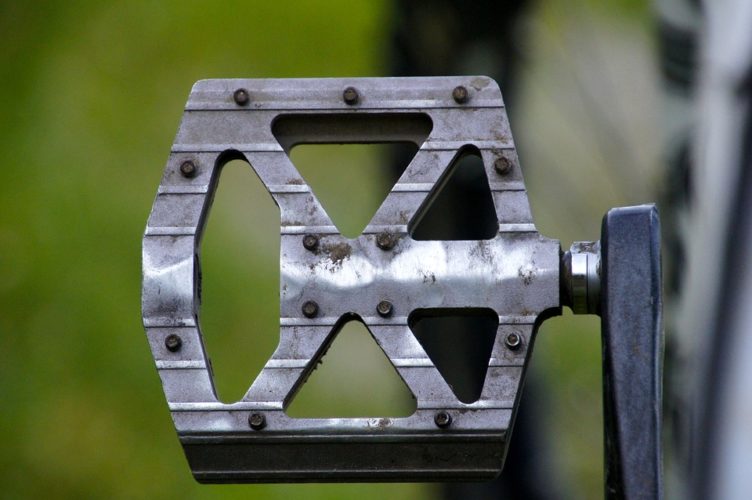 With the classic flat pedal, half of the biker’s potential energy is left dormant, as they are only able to exert a propelling force on the pedals down stroke. By attaching one’s feet to the bike’s pedals, every rotation of the pedals is half as taxing to your body. Since the rider is able to implement strength from more muscle groups, their body is working more efficiently, which results in a nearly exponential increase of acceleration.
With the classic flat pedal, half of the biker’s potential energy is left dormant, as they are only able to exert a propelling force on the pedals down stroke. By attaching one’s feet to the bike’s pedals, every rotation of the pedals is half as taxing to your body. Since the rider is able to implement strength from more muscle groups, their body is working more efficiently, which results in a nearly exponential increase of acceleration.
Confidence & Consistency
Finally, the improved safety, control, power, and efficiency result in greater confidence in one riding, as well as a greater consistency of usage. For example, if your car is on its last legs and every ride might be its last, you don’t exactly wake up looking forward to driving it. On the other hand, if you have a Tesla in the driveway, you probably look forward to driving it.
 When you know that you have outfitted your bike with the right gear including cycling shoes to enable the best ride possible, it becomes a joy and point of pride. The practical and physical benefits of using clipless pedals work to prevent improper body use while riding encourage you to keep up with the consistency of your biking. If you are looking to take your ride to the next level of skill and fun, it is time to experience the benefits of using clipless pedals.
When you know that you have outfitted your bike with the right gear including cycling shoes to enable the best ride possible, it becomes a joy and point of pride. The practical and physical benefits of using clipless pedals work to prevent improper body use while riding encourage you to keep up with the consistency of your biking. If you are looking to take your ride to the next level of skill and fun, it is time to experience the benefits of using clipless pedals.
Feel free to leave comments and question and remember—always wear a helmet!

Why You Should Wear Indoor Cycling Shoes
Biking for fun is great but, once it becomes a regular part of your daily life, it is time to invest in the gear that will enable your best performance in terms of longevity. For those who enjoy indoor spinning or cycle training, improper footwear can cause short-term discomfort and long-term physical repercussions on your muscles, joints, and tendons.
For this reason, serious cyclists choose to use indoor cycling shoes for their training. If you are not fully aware of the reasons why you should wear indoor cycling shoes when training, this guide will serve to outline the major benefits and features of indoor cycling footwear.
Indoor vs. Outdoor Cycling
There are several significant differences between indoor cycling and outdoor cycling that determine the features that are required for their gear. When it comes to a cyclist’s footwear, the right shoes make a substantial difference in the ease, efficiency, and consistency of your ride. Before we get into the specific features and benefits of indoor cycling, let’s outline the key differences between the two styles of riding.
Outdoor Cycling
Ideally, for most bikers, time is spent riding in the beautiful outdoors. After all, the greatest benefit of biking regularly is the bond that is formed between the ground and your body, as you ride the waves of the landscape. The footwear that a rider chooses will depend completely on the type of outdoor riding that they engage in.
 Trail riding and mountain biking will require a very different style of cycling shoe than that of urban commuters and road cyclists. The cycling shoe that you use outdoors must be designed to withstand environmental factors, such as rain, debris, and temperature fluctuations. Also, riding on the road or trail requires an ability to dismount the bike for many reasons, such as accidents and stop lights.
Trail riding and mountain biking will require a very different style of cycling shoe than that of urban commuters and road cyclists. The cycling shoe that you use outdoors must be designed to withstand environmental factors, such as rain, debris, and temperature fluctuations. Also, riding on the road or trail requires an ability to dismount the bike for many reasons, such as accidents and stop lights.
Many outdoor cycling shoes are clipless (cleats) or have some sort of strap-in feature that is easily disconnected by the rider’s feet. Cycling shoes, for outdoor riding, will usually feature a specialized cleat and pedal system, which does not inhibit one’s ability to walk normally in the shoe. Some road cycling and racing shoes will be acceptable for indoor uses, but indoor cycling shoes are not generally intended for outdoor use.
Indoor Cycling
Indoor cycling has gained popularity in recent years, mostly in the form of spin classes. The most obvious, and definitive difference between outdoor and indoor cycling, is movement. When cycling indoors, the rider is completely stationary the entire time, which has a significant impact on the design of footwear intended solely for indoor use. Though they offer less overall versatility, indoor cycling shoes are generally priced around $100, as opposed to their multi-hundred dollar outdoor counterparts.
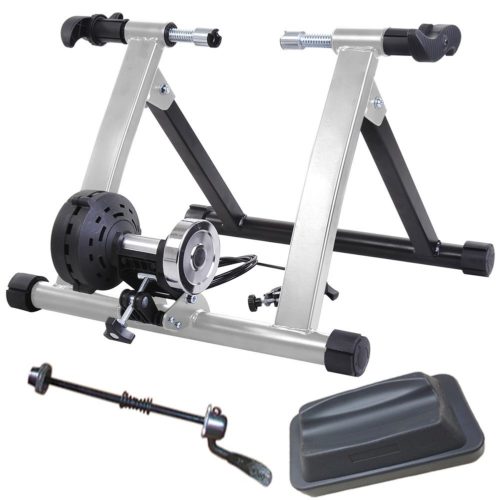 Indoor cycling, or spinning, either uses a spin cycle machine or a cycling turbo trainer, which connects to the rear wheel of the cyclist’s own bicycle. The latter is the overwhelmingly preferred method of cycle training for those who bike regularly. Indoor cycling is not only a fantastic form of cardiovascular exercise but also the best way for bikers to train and keep up with their physical conditioning in winter months and harsh weather when outdoor cycling is not preferable.
Indoor cycling, or spinning, either uses a spin cycle machine or a cycling turbo trainer, which connects to the rear wheel of the cyclist’s own bicycle. The latter is the overwhelmingly preferred method of cycle training for those who bike regularly. Indoor cycling is not only a fantastic form of cardiovascular exercise but also the best way for bikers to train and keep up with their physical conditioning in winter months and harsh weather when outdoor cycling is not preferable.
Recently, indoor biking has been given a big upgrade, by implementing smart technology into turbo cycling trainers. Smart turbo trainers can link up with programs like Zwift, which puts cyclists into a virtual biking community. Wireless connectivity allows the smart turbo trainers to link up with other cyclists from across the globe, with whom you can engage in races and rides on a video-game-like interface.
Riders can control the trainer remotely from a smartphone, tablet, or laptop while viewing their race on a screen in front of them as if they were actually there. These smart trainers also shift the pedaling resistance in conjunction to the terrine of any virtual map, giving a life-like outdoor sensation to your ride.
This technological innovation has changed the way that bikers and cyclists engage in the sport from an indoor environment and has created a more communal, fun atmosphere in which to train and exercise at home or the gym. However, in order to mitigate fatigue, cyclists should wear indoor cycling shoes to take full advantage of the benefits that indoor cycling has to offer.
Indoor Cycling Shoes
Cyclists use specifically designed shoes to ensure their safety while riding and to improve their physical performance while riding. Cycling shoes are designed to attach to the bike’s pedals, using a clipless cleat system or a clip-in pedal system.
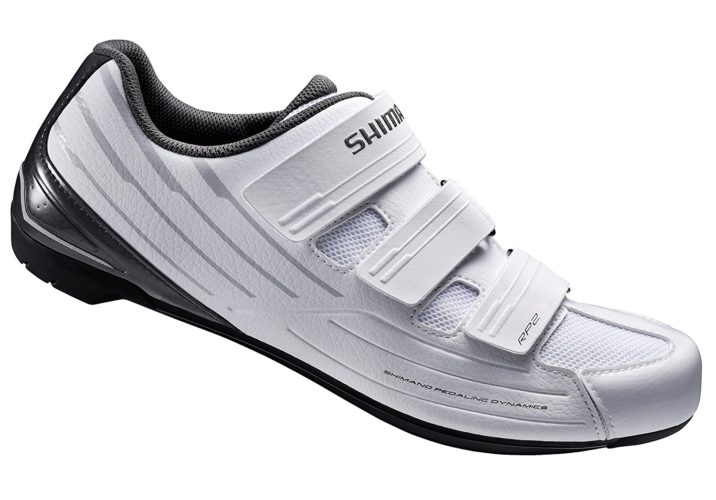 There is a wide variant in the specific make of any particular cycling shoe, depending on the type of riding it is designed for; however, these shoes are all meant to allow the rider to pedal with greater power and efficiency while mitigating a rider’s overall fatigue.
There is a wide variant in the specific make of any particular cycling shoe, depending on the type of riding it is designed for; however, these shoes are all meant to allow the rider to pedal with greater power and efficiency while mitigating a rider’s overall fatigue.
Indoor Cycling Shoes Features & Benefits
Shoes designed for indoor cycling will benefit the user in several ways that may not be evident at first. These shoes are made specifically for the kind of environments that are typical of spin classes and gymnasiums and provide exceptional support and security while you’re engaged in a long-duration ride. Here are a few of the defining features and benefits that outline why you should wear indoor cycling shoes.
● Pedal Support
Indoor cycling shoes feature a rigid upper and a hard sole. The rider’s foot is meant to fit snuggly without any slide within the shoe to enable the most efficient power transfer between pedal strokes. Unlike many outdoor cycling shoes, which feature a semi-flexible sole, indoor cycling shoes benefit the stationary rider with a solid construct, providing maximum support and stability for a rider’s foot.
● Breathability
 Unlike outdoor cycling, there are no natural elements or obstacles to contend with in the gym or the comfort of your own home. Therefore, the paramount concern of an indoor cycling shoe is with regards to its breathability.
Unlike outdoor cycling, there are no natural elements or obstacles to contend with in the gym or the comfort of your own home. Therefore, the paramount concern of an indoor cycling shoe is with regards to its breathability.
Indoor cycling shoes are designed to feature the maximum amount of structural support, sole rigidity, and material breathability. Ensuring adequate air flow and perspiration diffusion while cycling requires specific design features, as opposed to that of outdoor shoes.
● Slip-Resistance
Outdoor cycling shoes are designed to transition from one’s bike onto the sidewalk or soil. Indoor cycling shoes have only one terrain shift—from the bike to the gym floor. To keep users from slipping and sliding around, indoor cycling shoes are often designed specifically to provide excellent grip on smooth tile surfaces and solid wood floors without scratching or scuffing the flooring material.
● Body Alignment
 Indoor cycling entails a rider to remain in a single location while pedaling for an extended period of time. Unlike outdoor cycling, this does not necessitate quite as much give and take in a riders footing, which is why indoor cycling shoes are made for the maximum alignment support.
Indoor cycling entails a rider to remain in a single location while pedaling for an extended period of time. Unlike outdoor cycling, this does not necessitate quite as much give and take in a riders footing, which is why indoor cycling shoes are made for the maximum alignment support.
These shoes ensure that riders do not place undue stress and exertion onto joints muscles and tendons while engaged in prolonged cycling.
● Up-Stroke Pedal Power
Like all connective cycling shoes, indoor cycling shoes’ biggest benefit is the added power in a rider’s up-pedal-stroke. With flat pedals, a rider has no ability to use their up-stroke for pedaling power. The power and energy efficiency that one gains from connective pedal footwear is one of the biggest benefits regarding why you should wear indoor cycling shoes.
Please feel free to leave comments and questions.

SPD Pedals – Buyers’ Guide for 2017
If you are an avid bicyclist, you know full well how important each piece of your bike’s hardware is to its riding efficiency and ease. Unfortunately, all too often, would-be bikers are put off because of rectifiable problems with specific pieces of gear on their bike. Experience riding with several types of bike pedals or cleats quickly demonstrate the difference that your bike’s pedals add to the speed, effort, fun, and safety of bicycling.
Bike Pedal Types
One of the first and biggest factors in determining which pedal type is correct for you is to specify your usage. The type of pedal you will use on a mountain bike for trail riding is different than the type you would want for BMX mountain biking. Likewise, urban bike commuters will likely choose a different style of pedal than a weekend joy ride cruiser.
Flat Pedals
Also called “Platform Pedals,” these are the most common type of bike pedal seen. You probably remember this from your childhood bike or maybe you have a cruiser out in the garage. Flat pedals are an easy, reliable, zero-learning-curve pedal. Just step on the wide surface and ride.
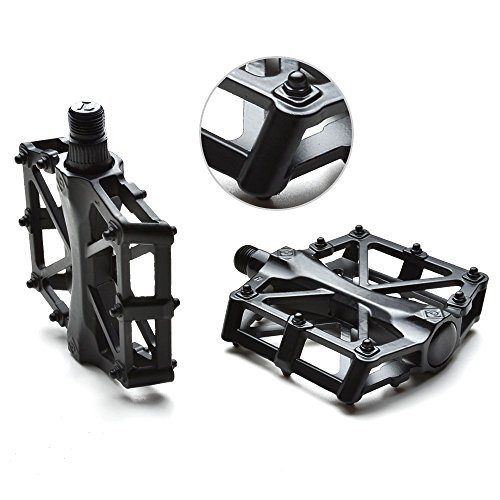 These pedals are low maintenance and inexpensive; however, you will not find flat pedals on many quality bikes. Though they are basic and cheap, flat pedals do not support any type of clip or clipless cycling shoe. Flat pedals support just about any shoe and are the easiest to dismount from in the event of an accident, but they have significant drawbacks for regular riders.
These pedals are low maintenance and inexpensive; however, you will not find flat pedals on many quality bikes. Though they are basic and cheap, flat pedals do not support any type of clip or clipless cycling shoe. Flat pedals support just about any shoe and are the easiest to dismount from in the event of an accident, but they have significant drawbacks for regular riders.
Flat pedals are meant for beginner and recreational users. If your usage lends towards commuting, offroading, travel, or speed, you will benefit from a more advanced pedaling system. Often, rider’s feet will have a tendency to slip off of the pedals when riding at higher speeds and they promote fatigue in the rider’s legs due to the mono-directional force that they enable.
Clip-On and Strap-On Bike Pedals
This type of bike pedal is often called a “toe cage.” Either using a strap or a toe clip, a rider slips their toe into a holster that is attached to the pedal. The frame for the rider’s toe can vary in size, from minimally small to precariously large. These are common pedal types and they offer an affordable, easy way to determine if an attached pedal system is right for you.
 Clip-on pedals benefit a rider’s effort expenditure, by providing two directions of force to the pedals. With a flat pedal system, riders can only exert force in one direction, which is when they push the pedals downward. With clip-on pedals, as well as clipless pedals, riders push down on one pedal while the pedal attachment allows their other foot to pull up on the opposite pedal. This greatly reduces a rider’s effort in propelling the bike.
Clip-on pedals benefit a rider’s effort expenditure, by providing two directions of force to the pedals. With a flat pedal system, riders can only exert force in one direction, which is when they push the pedals downward. With clip-on pedals, as well as clipless pedals, riders push down on one pedal while the pedal attachment allows their other foot to pull up on the opposite pedal. This greatly reduces a rider’s effort in propelling the bike.
The significant downside of clip-on and strap-on pedals is that the extra hardware tends to get caught up on sticks, strings, and other random debris. Also, any system that attaches the foot to the pedal of the bike creates an inherently dangerous situation in the case of an accident. This is where clipless pedals come in.
Clipless Bike Pedals
Contrary to what the name suggests, a clipless bike pedal does, indeed, clip onto the pedal. The name comes from an improvement made to the original clip-in pedal systems, which were released by hand using a lever or toe strap. These original models caused several deaths and many injuries since riders had to reach down to unhook themselves in the event of a crash. Clipless pedals are a significant improvement to the attached pedal design and offer the best of both worlds.
 Clipless pedals are designed to be compatible with special symbiotic shoes, which have a special cleat on the soul. When a rider steps onto the pedal, the cleat snaps into a spring-loaded bracket that’s attached to the face of the pedal. Once locked in, the shoe and the pedal work in tandem as one. To release one’s foot from the pedal, the rider has but to swing their away from the frame and the spring loaded pedal clip releases the cleat on the bottom of a rider’s shoe.
Clipless pedals are designed to be compatible with special symbiotic shoes, which have a special cleat on the soul. When a rider steps onto the pedal, the cleat snaps into a spring-loaded bracket that’s attached to the face of the pedal. Once locked in, the shoe and the pedal work in tandem as one. To release one’s foot from the pedal, the rider has but to swing their away from the frame and the spring loaded pedal clip releases the cleat on the bottom of a rider’s shoe.
2017 SPD Pedals Review
Shimano introduced the Shimano Pedaling Dynamics (SPD) System in 1990, which revolutionized the clipless pedal design. SPD pedals feature a specially designed show, which has a recessed cleat, making it easier to walk. This also allows SPD pedals to be smaller and lighter than other lines of clipless pedals. Below are the top 5 SPD pedals available in 2017 for those looking to up their cycling game.
1. Shimano PD-M530 MTB SPD Pedals
 The Shimano PD-M530 MTB SPD Pedal is designed for cyclists, winter time commuters and off roading. The platform is a bit larger than Shimano’s standard SPD pedal platform, adding a higher level of support when mountain biking. The pedal is dual sided for clipping in easy and quickly.
The Shimano PD-M530 MTB SPD Pedal is designed for cyclists, winter time commuters and off roading. The platform is a bit larger than Shimano’s standard SPD pedal platform, adding a higher level of support when mountain biking. The pedal is dual sided for clipping in easy and quickly.
It also features a tension adjuster, for fine tuning the pedals to be firm enough to exert force onto, yet loose enough to be able to release the clip quickly and efficiently.
Weighing less than 1 pound each, these SPD pedals are made of aluminum and steel and come with a one-year manufacturer’s warranty. The Shimano MTB SPD Pedals are great for beginner and intermediate mountain bikers and off trail riders. Coming in between $30 used and $150 new, the Shimano MTB SPD offers a wide range of savings options.
2. Shimano A530 SPD Pedals
 The A530 SPD Pedal is Shimano’s best all-in-one SPD system for beginners. Coming in around $40, these pedals are affordable and built to last.
The A530 SPD Pedal is Shimano’s best all-in-one SPD system for beginners. Coming in around $40, these pedals are affordable and built to last.
The A530 features a cleat clip on one side and an oversized platform on the other, giving the rider a choice of using the clipless SPD system or using any other cleatless shoe.
For those looking to get into a clipless bike pedal system, the A530 is a great choice to ease your way in. The pedals feature steel spindles and sealed cartridge bearings—perfect for urban commuters and road cyclists.
3. Shimano XTR PD-M9000 Race Pedal
 If you are a racing cyclist or any kind of road biking expert, the XTR PD-M9000 Race Pedal will give you the quality you need. Shimano brings the serious biker a quality pedal, made with aluminum and chrome steel, which significantly reduce the weight on your frame by up to 100 grams. These pedals are made to be used on the mountain trails, desert sands, and rocky roads.
If you are a racing cyclist or any kind of road biking expert, the XTR PD-M9000 Race Pedal will give you the quality you need. Shimano brings the serious biker a quality pedal, made with aluminum and chrome steel, which significantly reduce the weight on your frame by up to 100 grams. These pedals are made to be used on the mountain trails, desert sands, and rocky roads.
Of course, they will work admirably on sidewalks as well, but their single release system is practical for those who see a lot of action on their rides.
The XTR PD-M9000 will run you around $100 for a set and that is money well spent, as these pedals are made for the roughest and most rugged use in cross country riding.

The 5 Best Road Bikes Under $500 in 2017
Why Road Bikes are the Best Method of Daily Commuting
Cycling is arguably the most efficient and fun way to commute. There are mountain bikes, road bikes, hybrid bikes, cyclocross bikes, and entry-level road bikes to consider. Then there is what goes on the bike. Are you looking for steel frames, aluminum frames, or carbon fiber? Do you require disc brakes? The options are endless and can be a little confusing. However, once you have the right bike for your needs, the cost of upkeep for a bicycle is negligible when compared to maintenance costs of a car—not to mention the initial price for the vehicle's purchase. On top of that, for those who have a soft spot in their soul, for the problems of global warming caused by burning fossil fuels, the bike commuter can sleep easily, knowing that their vehicle is a state-of-the-art, zero-carbon-footprint machine (regardless of make or model). The best road bikes of 2017 can transform the way you live day-to-day and you don't have to break the bank. If you want to become a healthier, happier human, keep reading to see the 5 best road bikes with a price range of under $500 for 2017 that you can easily find online or down at your local bike shop.
The only question for those reading is: Are you ready to upgrade your lifestyle and integrate bike commuting as part of your daily habit? Perhaps, you remember biking as a child and feeling as though it was difficult or embarrassing. However, keep in mind that all bikes are not created equal. The effort which you expend in riding your bike is determined by the type of bike it is, the weight, and, most importantly, on what kind of tires that you are riding.
Why Ride a Road Bike?
Out of the many differences that road bikes exhibit—in terms of shape, material, aerodynamic design, and mechanical gear shifting differentiations—the main design feature of road bikes, which makes them the best bike type for commuters, is the tire size. Road bike tires are thin and sleek. They are meant to be ridden on the road and, therefore, do not require the surface area and treading, which is favorable for mountain bikes. This substantially cuts down on the tire’s mass.
Since road bike tires are thinner than others, they hold a lower volume of air and are designed to be filled to a much higher presser. The increased pounds of pressure per square inch of the road bike tire, combined with the decreased resistance of the tires surface area is the design feature, which provides road bikes with the benefit of pedaling effort efficiency. It takes less effort to pedal when there is higher air pressure and less physical resistance.
Road Bike Types
The road bike types that are designed with the best use in mind for riders are racing road bikes, endurance road bikes, cyclocross road bikes, and touring road bikes.
- Racing road bikes
These bikes are built for speed. They are sleek and slender, designed for racing. The gears are closely set in ratio and the tires generally measure between 23 mm and 25 mm. The slim tires and drop-down handlebars make cutting through the streets a breeze. However, they are great bikes for commuting too. The speed design makes these road bikes great for commuters who like to get where they are going—fast. Racing road bikes are meant for the rider to bring the bike up to a cruising speed and to continually shift between accelerating and drifting. The positioning of the rider on the bike can be less comfortable for those with any kind of physical limitation. Racing road bikes are designed for flexible athletes, but for anyone who is in shape or is dedicated to getting fit, racing road bikes are the easiest to pedal and the fastest type to ride.
- Endurance road bikes
Endurance road bikes are, perhaps, the best road bike for full-time bike commuting beginners and those who commute on rougher terrain. They combine a mixture of comfort and high-performance features for the rider who is in it for the long haul. The frames are designed to handle rougher terrain and the bike can accommodate a range of tire dimensions and sizes, based on the terrain’s dictation.
- Cyclocross road bikes
These road bikes are designed for a specific style of racing, in which the contestants race each other in a circle, over many laps—similar to a horse race or Nascar. These bikes are extremely lightweight and require the most hunched over riding position of any type. The wheels have an identifiable solid plate inside the wheel hub, which increases their aerodynamic attributes.
- Touring road bikes
Made for the open road, touring bikes are the best overall road bike model type for those who rely on biking as their primary means of transportation. The feature most identified with touring bikes is the rear pannier rack, which is designed to carry bags, boxes, crates, or packages of any kind. Though the tires are slightly thicker than those of road tires, usually around 32 mm wide, the added mass helps to bear the load of extra travel gear. This results in the frame being slightly longer than racing road bikes and more suited to a sustainable biking posture, resulting in a riding position which is more naturally upright.
The 5 Best Road Bikes Under $500 in 2017
Bicycles are a mechanical, physical, man-powered machine and every detail of the design, engineering, manufacturing, and construction of the bike, determines the overall quality of the unit. That being said, road bikes with high price tags are, in all likelihood, justified in their asking price. However, just because it doesn't come with all the bells and whistles, as a $3000 bike, doesn't mean that you have to mortgage your house to get a great road bike. To give you a hand, here is a list of the 5 best road bikes for under $500 dollars on the market in 2017.
1. Vilano Shadow Road Bike
The Vilano Shadow Road Bike starts around $300 and tops out around $450. If you want a great road bike for a great price, the Vilano Shadow Road Bike is overall the best road bike for under $500 in 2017. With a smooth aesthetic design, the Vilano Shadow is the tuxedo of high quality, economical road bikes. The lightweight aluminum frame makes carrying the bike easily manageable and the model comes in a simple assembly format. The 700c tires and 7-gear Shimano shifters are perfect for riding on the road, with low to medium altitude differentiation.
2. GMC Denali Road Bike
For those with the need for speed, (and frugality) the GMC Denali is the best road bike under $500 in 2017, for racing and getting where you’re going, fast. The 21-speed Shimano Revo shifters make for progressively easy hill climbing and are located conveniently on the handlebars to allow the rider to maintain control between shifts while riding at high speeds. The GMC Denali is constructed out of lightweight aluminum and comes in weighing under 35 pounds for easy transportation, handling, and low-resistance, high-speed riding.
3. Vilano Aluminum Road Bike 21-Speed Shimano
Another great option for the speed demons is the Vilano Aluminum Road Bike. It features 21-speed gear shifters and the frame is constructed of lightweight 6061 aluminum. Handlebar mounted shifters make for safe, effortless shifting while going through tight turns and steep hills. In total, this bike weighs less than 25 pounds, which makes it the best lightweight road bike under $500 in 2017.
4. SE Bikes Royal 14-Speed Road Bicycle
With a 14-speed Shimano gear derailleur and shifter, an alloy road caliper brake set, and an SE 1 alloy main frame the SE Bikes Royale 14-speed Road Bike is the best road bike for anyone worried about their bike breaking. Sturdy, solid, and safe this bike will get you from A to B without constant maintenance. Priced in the range of $500 to $700 and weighing over 30 pounds, it is not the first choice on this list; however, it is a high-quality, economical commuter bike.
5. Giordano Libero 1.6 Men's Road Bike - 700c
The trailblazer’s dream. The Giordano Libero 1.6 Men’s Road Bike is a high-quality endurance/touring bike, suitable for the multi-day excursion. A hand-crafted, lightweight aluminum frame, weighing only 26 pounds, securely, and effortlessly carries the 16-speed Shimano Claris STI shifters and derailleurs, which makes climbing steep hills an invigoratingly manageable task. Coming in around $400, the Giordano Libero is the best road bike under $500 in 2017 for the biker who wants the ability to adventure freely.
Biking is a fantastic way to stay healthy, help the world, and just get around. Always obey the rules of the road—after all, bicycles are equivalent vehicles to cars on the road. And, always, always, always, wear a helmet whenever you go for a ride. There are plenty of super cool helmets on the market, so be safe and have a blast!
